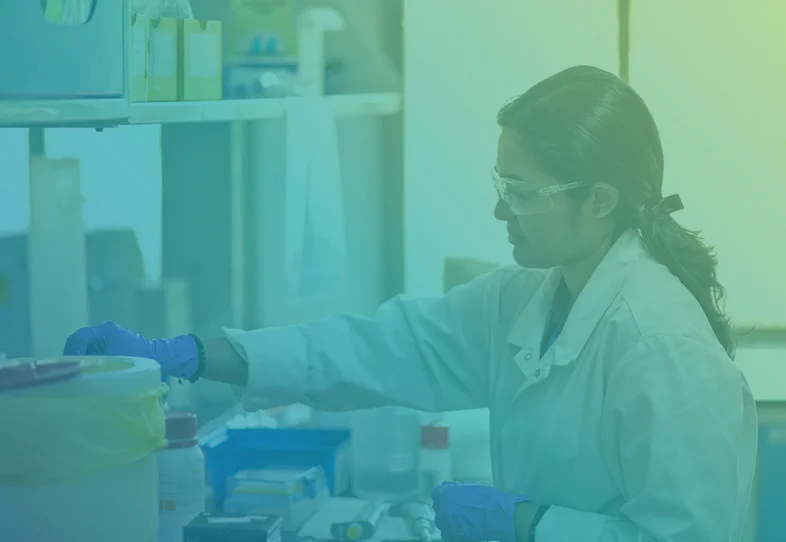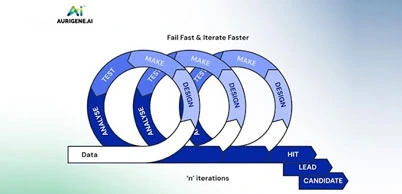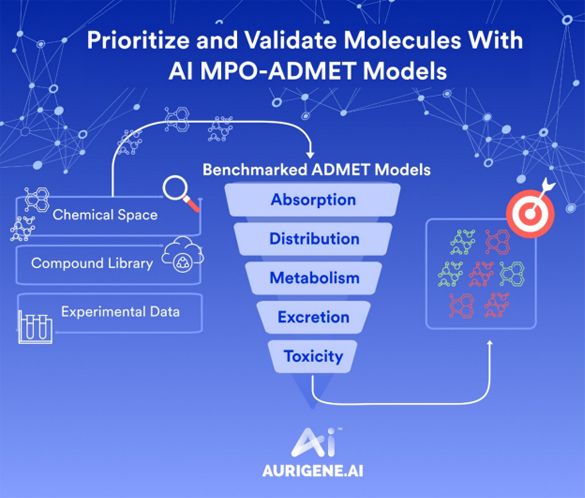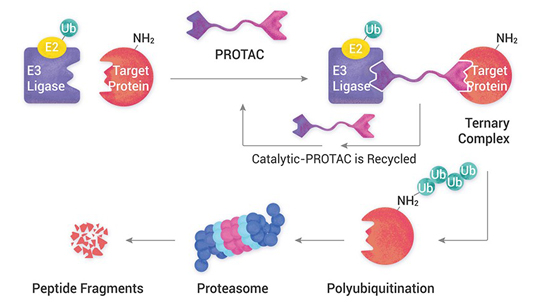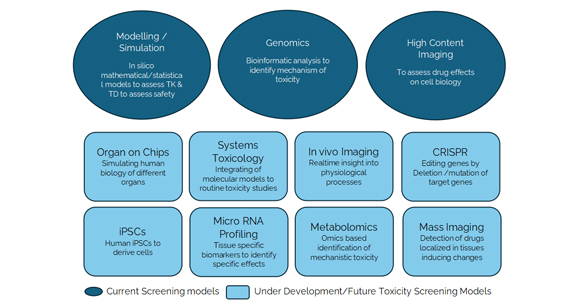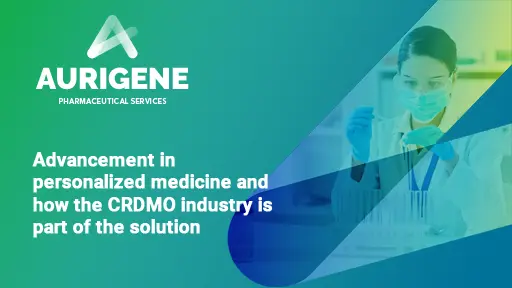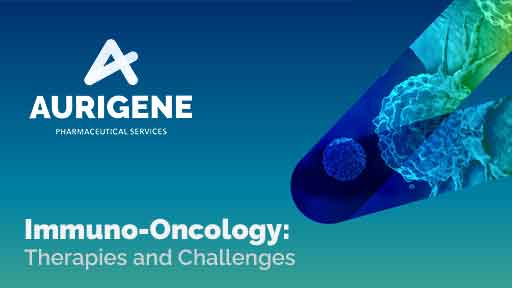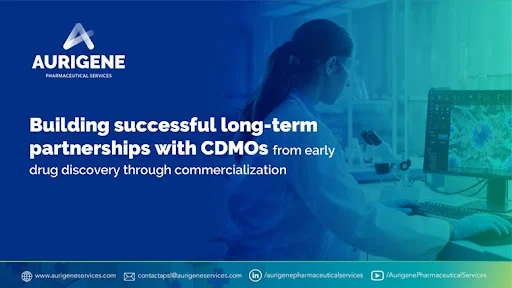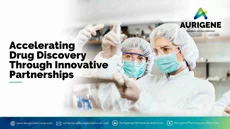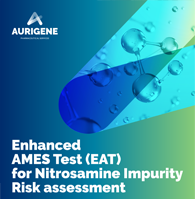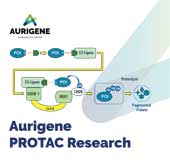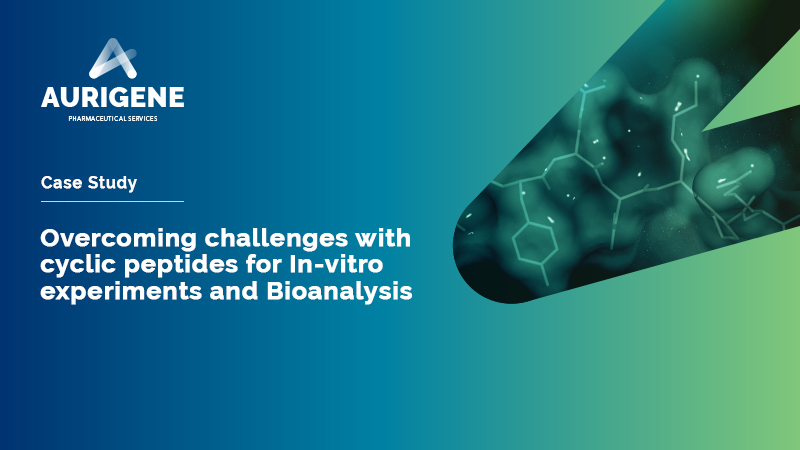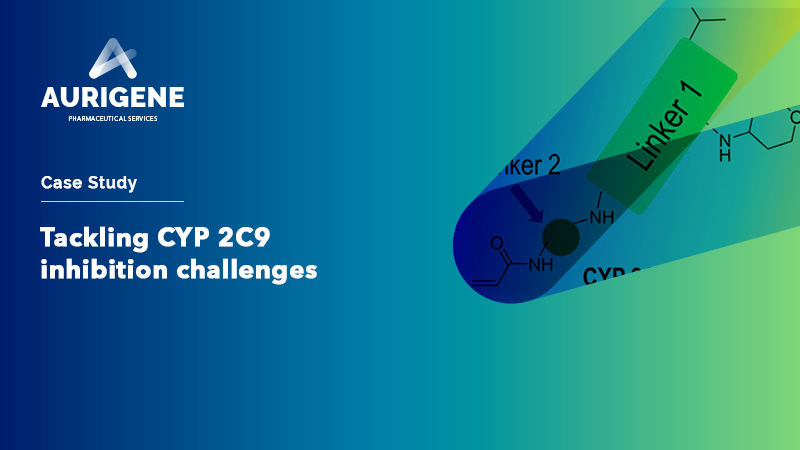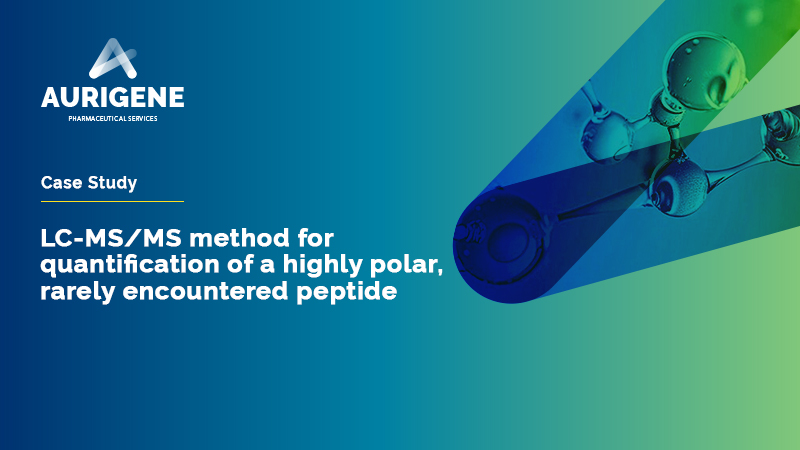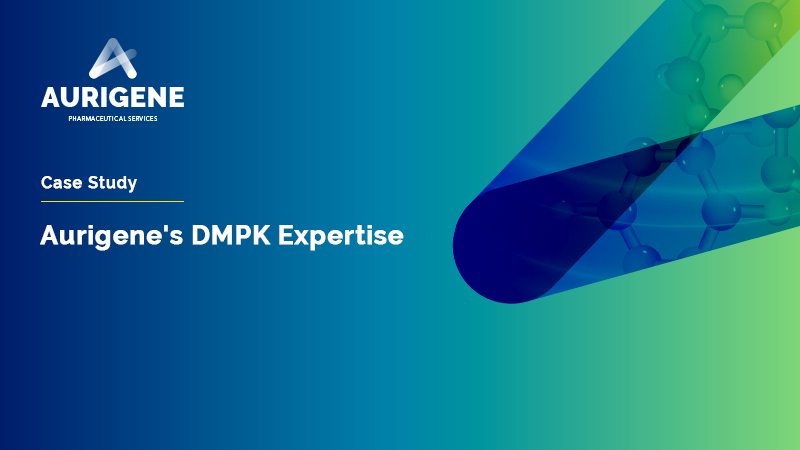The story of PDE4 inhibitors
In drug discovery, some breakthroughs not only treat diseases but also reveal the complexities of human biology. One such example is the development of phosphodiesterase 4 (PDE4) inhibitors, a class of drugs initially explored for treating inflammatory diseases like asthma and chronic obstructive pulmonary disease (COPD). These inhibitors target PDE4, an enzyme that plays a crucial role in regulating inflammation by breaking down cyclic AMP, a molecule essential for controlling cellular signaling pathways.
Although the promise of PDE4 inhibitors was undeniable, early candidates faced challenges, particularly severe gastrointestinal side effects, that hindered their clinical utility. Toxicology studies became instrumental in re-defining these drugs, helping to elucidate the mechanisms behind their adverse effects and guide the development of safer and more targeted molecules. Gradually, researchers optimized PDE4 inhibitors for respiratory conditions and also uncovered their potential in treating dermal diseases such as atopic dermatitis and psoriasis.
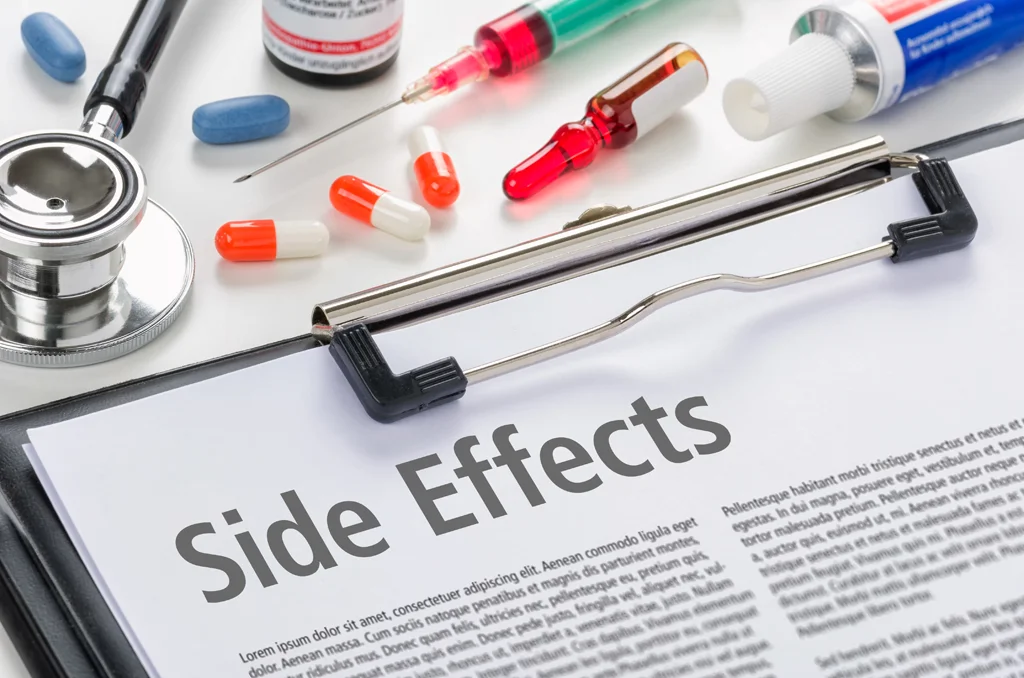
This journey highlights the vital role of toxicology in modern drug development. By unraveling the intricate balance between efficacy and safety, toxicologists facilitated the successful application of PDE4 inhibitors, transforming them into a versatile therapeutic option across multiple indications. Today, toxicology plays a crucial role as the silent protector of drug safety, ensuring that every new treatment, from its earliest concept to the moment it reaches patients, delivers the promise of healing without causing harm.
Connect with our scientific experts for your drug discovery, development and manufacturing needs
An introduction to Toxicology
Every drug starts with a spark of discovery—a chemical compound showing promise in a lab. But before it reaches the hands of patients, it must pass through one of the most crucial checkpoints: toxicology.
Toxicology is the study of the adverse effects, the mechanisms involved, and the damage that might be caused by chemical, physical, or biological agents on living organisms and the ecosystem. Toxicology testing methodologies help to determine the extent of damage, and ways to avoid or repair it. Toxicology is traditionally associated with chemical exposures, such as the effects of drugs, industrial chemicals, pesticides, food additives, household products and personal care items, including the prevention and amelioration of such adverse effects.
Toxicology focuses on understanding and minimizing potential deleterious effects by identifying potential target organs, NOAEL, MTD etc. Every potential medicine carries risks, and it has to be evaluated to mitigate those risks, thus ensuring patient safety.

Phases of Toxicology: From discovery to patient safety
In the early stages of drug development, discovery toxicology studies enables screening of chemical candidates to identify the early genotoxic concerns and the (Maximum Tolerable Dose) MTD so as to ensure adequate safety factor between the efficacy and the tolerable doses. At this stage, the focus of screening studies would be on early warning signs—target organs, specific toxicities, MTD, and genetic toxicity—that might disqualify a compound at a very early stage thereby saving time and resources.
Once a drug candidate is selected for pre-clinical development, the focus shifts to understanding the drug’s toxicity in detail. Toxicologists study how the drug behaves in different systems, how it’s metabolized, and what happens at varying doses. These findings help design safer clinical trials and determine which risks require close monitoring.
Safety is an ongoing journey, not a destination
Toxicology isn’t about proving that a drug is completely safe—no substance is entirely risk-free above threshold doses. Instead, toxicologists focus on characterizing the toxicity—understanding how factors like dose, duration of exposure, genetics, age, gender effect, reproductive and developmental stages (such as pregnancy or childhood) might influence a drug’s effects.
Toxicology services
The Investigational New Drug (IND) application and New Drug Application (NDA) are critical steps toward registration and distribution of a drug product across geographical regions. They are also critical for delivering safe and effective drugs to patients across the globe. Any delays or setbacks can cost the drug developer in terms of time and resources, making it essential to understand the intricacies of both processes and accelerate the registration process. The drug regulatory agencies such as the FDA require that an IND/NDA application must contain information on nonclinical Pharmacology and Toxicology studies in addition to manufacturing information, clinical protocols, and investigator information.
Every new medicine begins with a question: Can this molecule heal without harm? Behind the answer to this question lies a series of serious investigations, each step of which is guided by specialized toxicology services designed to uncover risks, understand effects, and ensure safety. In the world of CDMOs, toxicology is an integrated roadmap that accompanies a drug from discovery to approval.
New drug discovery
Focusing on decreasing nonclinical toxicity-related attrition should be addressed prudently in the early discovery process itself. Think of them as early warning systems—they show red flags before a compound enters the more resource-intensive phases of development. In the early stages of drug discovery, speed is the paramount factor. Non-GLP (Good Laboratory Practice) toxicology studies provide rapid, cost-effective insights into a compound’s safety profile without the strict regulatory requirements of GLP studies.
Screening for genetic toxicity using In vivo assays such as a non-GLP mini AMES test and an In vivo micronucleus screening assay will help the developer very early to decide on the course of a drug candidate in terms of its mutagenicity/clastogenicity potential.
A preliminary In vivo toxicity test in rodents (non-GLP) with a minimal duration (less turn-around time) based on the drug candidate properties would help the developer to identify a MTD at a very early stage of the drug discovery phase, which in turn would allow the developer to decide on further development based on the safety factor. As these studies are nonregulatory in nature, an experienced toxicologist would be able to provide tailor-made solutions for designing and executing a toxicology screening program at the discovery stage of a drug.
New drug development
Toxicology plays a critical role in the drug development process and is directly dependent on the expertise of the developer. Once a lead compound is identified during the discovery process, it enters into preclinical toxicology testing. The preclinical toxicology program is designed to identify the mutagenicity potential, target organs, if any, and the NOAEL (No Observed Adverse Effect Level) of the drug candidate in development. Though clear guidelines are in place towards regulatory toxicity testing, deciding the list of toxicity studies required for a drug development program with a focus on identifying First-in-human (FIH) and other human doses to consider in the clinical trials is of utmost importance.
Once the type of toxicity studies needed for a drug candidate is identified, an expert toxicologist will further aid in the design and execution of a toxicity study considering the properties of the lead candidate such as the therapeutic area, targeted population, route of administration, selection of species, selection of doses, selection of vehicle, inclusion of specific clinical and histopathological endpoints etc., in compliance to the principles of GLP and in line with the guideline requirements of the region where the clinical trials are proposed.
Core Safety Pharmacology Battery (not limited to) is another mandatory requirement for a drug to be taken into clinical trials. Safety Pharmacology experts design and execute studies to evaluate the central nervous system (CNS), cardiovascular system (CVS) and the respiratory system to identify exaggerated pharmacological effects amounting to the safety of the drug candidate. For example, a promising antidepressant might inadvertently disrupt heart rhythms. Through safety pharmacology assessments (e.g., hERG channel assays, respiratory rate monitoring), such risks can be identified and mitigated before clinical trials begin.
Imagine a new cancer drug—highly effective but with the potential to cause secondary cancers owing to its genetic toxicity. Genotoxicity assays (like AMES test, chromosomal aberration test, and micronucleus assay) are conducted early to flag such risks and guide chemical optimization. Early identification of genotoxic risks helps eliminate unsafe compounds before they progress to clinical trials, saving time, resources, and lives.
Drugs can sometimes affect fertility, pregnancy outcomes, or fetal development. Reproductive toxicology studies evaluate whether a drug might cause birth defects, affect fertility, or interfere with pregnancy at different stages. These studies are particularly vital for medications intended for women of childbearing age or pregnant individuals. For example, a new arthritis drug may be effective, but if it crosses the placental barrier and harms fetal development, it must be carefully monitored. These studies are designed and carried out by expert reproductive toxicologists as phase II (clinical trial) enabling studies if the drug is to be tested specifically in women of child bearing potential.
Long-term drug exposure can sometimes increase the risk of cancer. Carcinogenicity studies determine whether a compound can cause or accelerate tumor formation. Using specialized animal models, these studies assess the cancer-causing potential of a drug over extended periods, often spanning years. This study is routinely conducted as a phase III clinical trial enabling study for life style and long-term-use drugs.
Drug repurposing (505 B2)
Drug repurposing, also called drug repositioning or drug reprofiling, is the identification of new therapeutic uses for existing or investigational drugs and also where traditional drug development is not cost-effective, or a cure is urgently needed, such as in the search for COVID-19 treatments. Drug repurposing helps to quickly identify compounds with an established safety profile and known therapeutic advantages that may prove efficacious for rare diseases, oncology, infectious, autoimmune diseases and more. While pre-clinical studies are not a mandatory requirement for this type of projects, regulatory agencies often ask for data that is bridging in nature with the existing toxicity data. The expert toxicologist helps in designing these toxicity studies that would bridge the gap in the existing data thereby fulfilling the requirements of the regulatory agency.
Impurity profiling for generic drugs
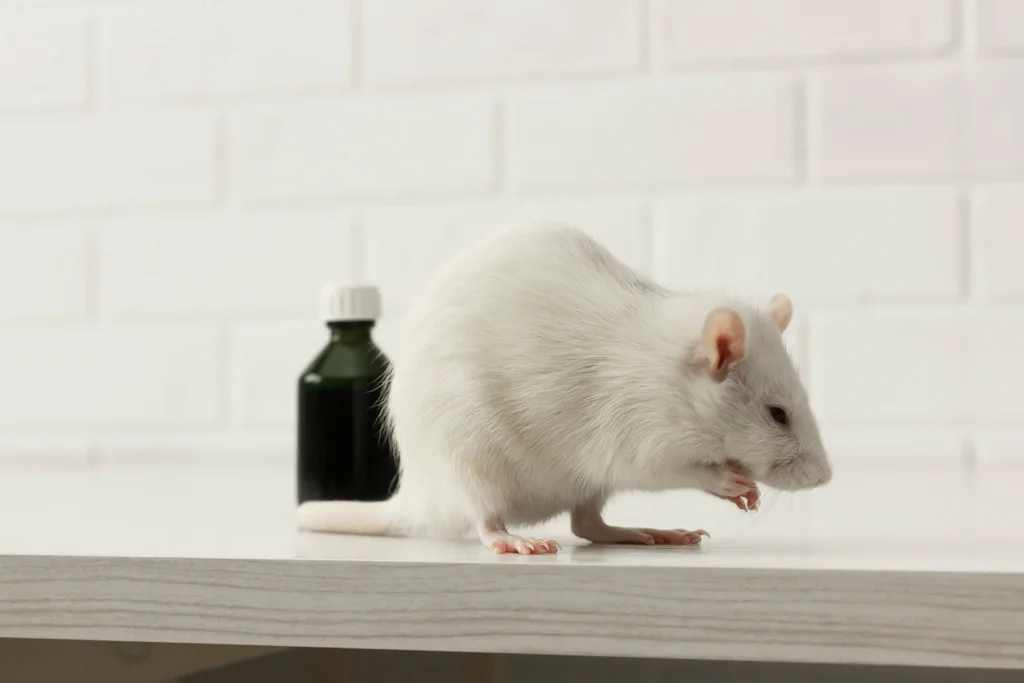
Impurity profiling plays a crucial role in the generic drug domain to ensure the safety, efficacy, and quality of drug products. When an impurity in a drug crosses the qualification threshold, general and genetic toxicology studies are required on a case-by-case basis to qualify the percentage of impurity present in the drug substance or the drug product. In line with related guideline requirements, an expert toxicologist can list and design the type of studies required to qualify an impurity in a drug, enabling first-to-file in niche markets.
Thus, it is evident that every toxicology study serves as a layer of protection, ensuring that potential risks are identified, characterized, and mitigated long before a drug reaches patients. Because in the world of pharmaceuticals, every result isn’t just data—it’s a promise of safety, a foundation for hope, and a bridge to better health.
Let’s walk through the key toxicology services Aurigene offers, breaking them down into the milestones that safeguard a drug's journey.
Toxicology services offered by Aurigene
With over 20 years of experience, with 1,000+ toxicology studies completed, and successful IND/NDA filings with global regulatory authorities, Aurigene’s toxicology services are designed to support every phase of a drug's lifecycle. We combine cutting-edge facilities, comprehensive toxicology services, and a commitment to scientific excellence to ensure every molecule is tested for safety, reliability, and compliance with global standards.
At Aurigene, our state-of-the-art toxicology facilities form the backbone of our safety assessment services. Our facilities, designed to meet the highest regulatory standards (GLP-certified, AAALAC, & OLAW-accredited) and equipped with advanced instrumentation, enable us to conduct accurate and reliable toxicology studies across diverse therapeutic areas.
Key features of our facilities:
- GLP-Certified laboratories: Compliant with international regulatory bodies, including US FDA, EMA, MHRA, and DCGI.
- AAALAC & OLAW-Accredited animal facilities: Ensuring ethical care and use of laboratory animals in all studies.
- Advanced animal housing systems: Optimized environments for various species, including rodents and beagle dogs, ensuring consistent and humane conditions.

- Multi-Route administration capabilities: Expertise in diverse drug administration routes:
- Oral
- Intramuscular
- Subcutaneous
- Intradermal
- Intravitreal Injection
- Intravenous bolus/Infusion
- In-Situ perfusion techniques: Advanced methods for tissue distribution studies in rodents.
- Histopathology and clinical pathology laboratories: Equipped with GLP-compliant instruments for precise and reproducible analyses.
- Bioanalytical and DMPK integration: Seamless coordination with co-located GLP-compliant analytical and DMPK teams for drug formulation and plasma concentration analysis.
- Real-Time Digital data management systems - Provantis: Ensuring secure, transparent, and traceable data reporting across global collaborations.
- Real-Time communication infrastructure: Streamlined workflows for uninterrupted collaboration with global clients.
Our world-class facilities ensure compliance, precision, and reproducibility across all toxicology studies, supporting seamless regulatory filings and client trust.
Aurigene offers a wide array of GLP and non-GLP toxicology studies covering acute, sub-chronic, and chronic toxicity, and specialized areas like reproductive toxicology and genetic toxicology.
General toxicology services:
General toxicology studies form the foundation of a drug’s safety profile. These assessments evaluate short-term, medium-term, and long-term effects to guide safe dosing for human trials.
Exploratory toxicology studies:
Early-phase exploratory studies provide rapid insights into a compound's safety profile. These studies are tailored to client requirements based on the nature of the test compounds and the intended product development pathway.
Key offerings:
- Single-Dose toxicity studies: Evaluating the immediate effects of a one-time dose.
- 4-Day, 7-Day, and 14-Day Repeat Dose Toxicity Studies: Determining the Maximum Tolerated Dose (MTD) after short-term exposure.
- In vivo Mini Ames Test
- In vivo Ames Fluctuation Assay
- In vivo mini micronucleus test
These studies serve as the foundation for subsequent GLP-compliant toxicology studies by establishing initial safety parameters.
General toxicology studies
Our GLP-compliant definitive toxicology studies are meticulously designed to support IND and ANDA filings with global regulatory bodies, including US FDA, EMA, and DCGI.
Key Offerings:
- Sub-Acute toxicity studies (14–28 Days): Medium-term assessments of repeated exposure effects.
- Sub-Chronic toxicity studies (90 Days): Evaluating systemic effects from prolonged dosing.
- Chronic toxicity studies (180 Days–2 Years): Assessing long-term safety risks.
- Carcinogenicity studies
- Combined chronic and carcinogenicity studies
Special Inclusions:
- Satellite Toxicokinetic (TK) Groups: For plasma drug exposure measurements on specified intervals.
- Formulation Analysis: Verifying drug concentration, homogeneity, and stability.
These studies provide critical data for determining safe dose ranges, potential organ toxicity, and long-term safety in preparation for human clinical trials.
Dose Range-Finding (DRF) studies aim to identify the Maximum Tolerated Dose (MTD) enabling dose selection of long term definitive toxicity studies. Definitive long-term general and carcinogenicity studies aim to identify respective No-Observed-Adverse-Effect-Levels (NOAEL) and to identify target organs of toxicity, if any..
Reproductive toxicity studies
Reproductive toxicity studies are conducted with the objective of identifying adverse effects relevant to fertility, pregnancy and development.
Key Offerings:
- Male and Female Fertility Studies in Rodents
- Embryo-foetal Toxicity Study in Rodents & Non-Rodents
- 2-Generation Toxicity Study in Rodents
- Juvenile Toxicity Study in Rodents
Genetic toxicology services:
Genotoxicity testing tells us if a molecule causes damage to the DNA. Genetic toxicology studies evaluate whether a compound can cause mutations or damage DNA, which could lead to irreversible effects such as cancer or heritable diseases.
Key Offerings:
- In vivo Salmonella typhimurium Reverse Mutation Assay (Ames Test)
- Enhanced Ames Test
- In vivo Chromosomal Aberration Assay in cells and cell lines
- In vivo Micronucleus Assay in cells and cell lines
- In vivo Mouse Lymphoma Assay in cell lines
- In vivo Chromosomal Aberration Study in Rodents
- In vivo Micronucleus Study in Rodents
The In vivo studies can also be integrated into the repeated dose 28-day toxicity studies as a specific end point.
IND/NDA-Enabling toxicology packages:
- Integrated Safety Assessments: End-to-end toxicology evaluations covering all necessary domains.
- Regulatory Submission Support: Preparing documentation and ensuring compliance with global regulatory standards.
- Ongoing Safety Monitoring: Toxicology assessments continue during clinical phases to address emerging risks.
Histopathology and Clinical pathology services:
- Standalone Histopathology Services: Detailed tissue evaluations for drug-induced abnormalities.
- Clinical Pathology Services: Assessing biochemical, cellular, and metabolic markers in blood and urine samples.

Why It Matters: Clinical and histopathological evaluations provide critical microscopic insights, complementing other toxicology findings.
At Aurigene Pharmaceutical Services, our approach to toxicology blends scientific excellence, regulatory expertise, and client-centric innovation.

Proven regulatory success
- IND and NDA filings approved by US FDA, EMA, DCGI, and MHRA.
- Decades of experience in navigating complex regulatory landscapes.

Integrated service model
- End-to-end toxicology services, from early discovery to regulatory filings.
- Customized solutions tailored to unique client requirements.
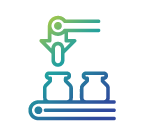
Cutting-edge infrastructure
- GLP-certified labs and AAALAC-accredited facilities ensure global compliance.
- Advanced tools for tissue distribution, PK studies, and genetic toxicity assessments.

Scientific expertise
- A team of highly experienced toxicologists, pathologists, and safety pharmacology experts.
- Specialization in handling multi-route drug administration techniques.

Client-centric collaboration
- Real-time communication for seamless global coordination.
- Transparent data reporting and project timelines.

Innovation-driven approach
- Specialized assays like the Enhanced Ames Test (EAT) for nitrosamine detection.
- In-situ perfusion techniques for precision studies.
Resources
Good practices in non-clinical toxicology: Accelerating IND and NDA submissions
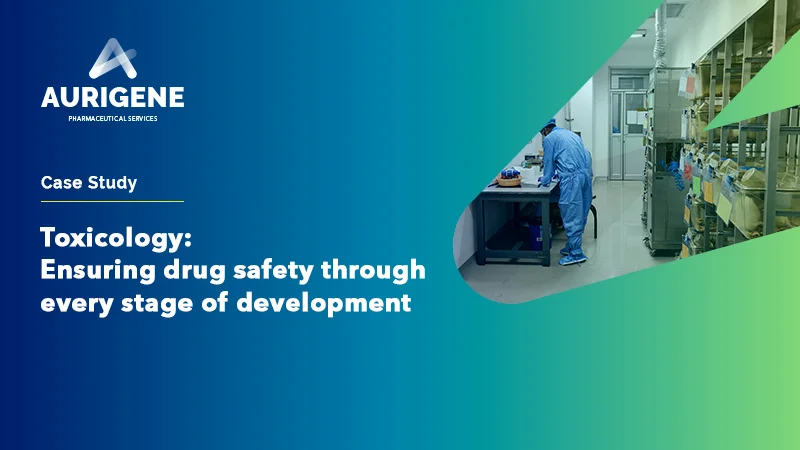
Non-clinical toxicology assessments are a critical foundation for successful IND and NDA submissions. In this article, Aurigene Pharmaceutical Services shares insights into best practices for designing and conducting toxicology studies that meet global regulatory standards. The discussion covers strategic planning, efficient study execution, and robust data documentation, all aimed at streamlining regulatory approvals and reducing delays. Read the full article here..
Enhancing solubility and oral bioavailability: A case study in rodent toxicology studies
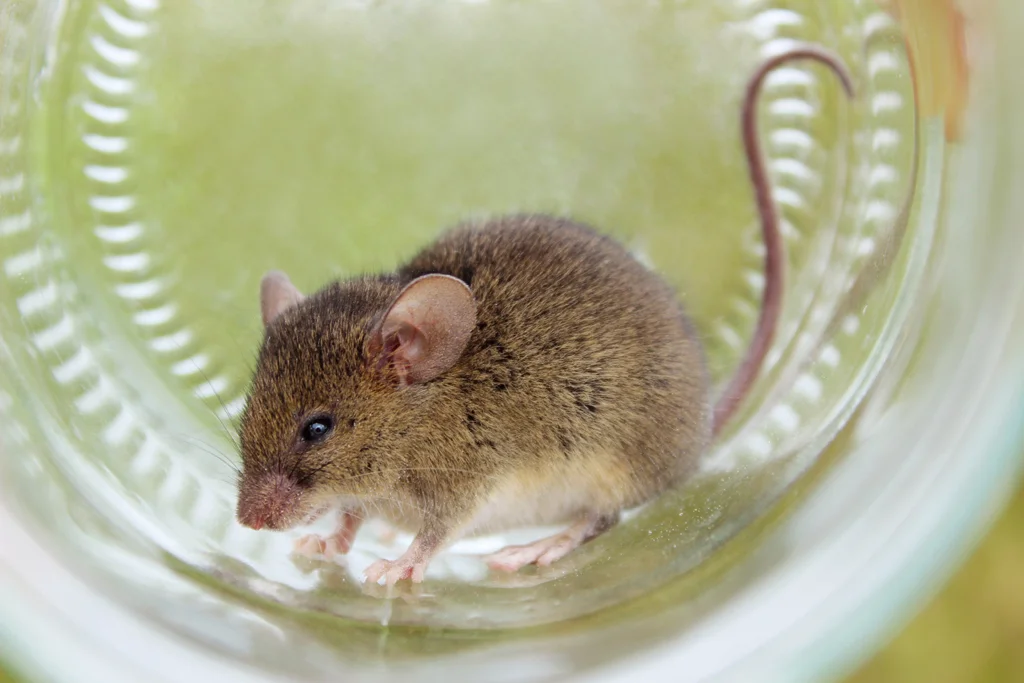
At Aurigene Pharmaceutical Services, overcoming challenges related to poor solubility and limited oral bioavailability is a key focus in drug development. In this case study, our team employed solid dispersion techniques to optimize drug formulation, ensuring improved drug solubility and enhanced bioavailability in rodent toxicology studies. Herein, we addressed critical formulation barriers, enabling accurate toxicology evaluations and paving the way for successful clinical development. This study highlights our commitment to delivering innovative and reliable solutions tailored to our clients' unique requirements. Explore the full case study here.
Future of toxicology services
In the ever-evolving pharmaceutical and biotechnology sectors, toxicology services stand as the linchpin of drug safety and efficacy. As CDMOs play an increasingly vital role in pharmaceutical innovation and production, the landscape of toxicological services is undergoing a significant transformation.
Shifting from traditional animal models to In vivo and In Silico Testing
Historically, toxicology relies heavily on animal testing models to predict human responses to pharmaceutical compounds. However, advancements in In vivo (cell-based assays) and in silico (computer-based simulations) methodologies show indications to fundamentally alter the approach to toxicology testing. Techniques like high-throughput screening (HTS), 3D tissue models, and organoids are replacing traditional animal models, offering more ethical, cost-effective, and predictive outcomes.
Computational toxicology, powered by Artificial Intelligence (AI) and Machine Learning (ML), allows scientists to simulate chemical interactions with human biology at an unprecedented scale and precision. These tools can identify toxicity risks early in the development process, significantly reducing the failure rates of drug candidates in late clinical stages. For CDMOs, adopting In vivo and in silico methods leads to faster timelines, lower costs, and enhanced data quality, ensuring a competitive advantage in the global market.
Rise of Omics technologies and systems toxicology
Advances in omics technologies—including genomics, transcriptomics, proteomics, and metabolomics—are transforming the field of toxicology by offering a more complete and detailed view of how chemicals interact with our biology. Imagine having a molecular map that reveals how a drug behaves inside the body, from the way it influences genes to how proteins respond and metabolic pathways shift. That’s the power of omics. These technologies help scientists trace adverse outcome pathways (AOPs), which are essentially the chain reactions that lead to toxicity at a cellular or tissue level. When paired with systems toxicology, which combines data from In vivo tests, computational models, and omics analyses, we get a detailed snapshot of how a compound might behave in a living system. For CDMOs, this means being able to spot potential toxicity issues much earlier in the drug development process. It allows for better risk assessments, smarter decision-making, and a more targeted approach to candidate selection.
Artificial intelligence and machine learning in predictive toxicology
Artificial Intelligence (AI) and Machine Learning (ML) are becoming indispensable tools in modern toxicology. These technologies enable the analysis of vast datasets, identifying patterns and relationships that are often too complex for traditional statistical models. Deep neural networks are being utilized to predict chemical toxicity, while contrastive molecular explanations improve the interpretability of these predictions.

Probable future of toxicology – probabilistic risk assessment
Probabilistic risk assessment is emerging as a key methodology for evaluating chemical risks in real-world scenarios. This approach incorporates variability and uncertainty into toxicity predictions, offering a more nuanced and quantitative risk evaluation framework. Instead of binary "safe/unsafe" conclusions, probabilistic models provide risk distributions, enabling more informed decision-making in drug safety. For CDMOs, AI and probabilistic risk assessment tools facilitate high-throughput compound screening, early identification of red flags, and better allocation of resources. This transformation is not only improving the accuracy of toxicological assessments but also streamlining workflows and reducing dependency on physical testing infrastructure.
Advent of personalized toxicology and patient-specific models
The pharmaceutical industry's focus on personalized medicine is also reshaping toxicology services. Scientists have started using patient-specific models, including 3D organoids and genetically tailored in silico simulations, to predict how individuals might respond differently to therapeutic compounds. These models account for genetic variability, metabolic differences, and unique patient profiles, offering a far more accurate picture of toxicity risks. For CDMOs, this implies developing toxicology programs that are highly customized and aligned with personalized therapeutic goals. As patient-centric drug development continues to gain traction, CDMOs must be prepared to integrate these advanced tools into their toxicology workflows to address individualized safety concerns effectively.
Global regulatory changes and harmonization
Regulatory bodies, including the FDA, EMA, OECD, and ICH, are actively revising guidelines to accommodate new technologies and methodologies in toxicology. The ICH M7 guidelines, for example, emphasize the identification and control of mutagenic impurities like nitrosamines. There is also increasing acceptance of In vivo and in silico models in regulatory submissions, reducing reliance on animal testing. For CDMOs, aligning toxicology practices with these evolving regulatory frameworks is critical. Compliance with updated guidelines not only ensures smooth regulatory approvals but also positions CDMOs as trustworthy partners in global pharmaceutical supply chains. Additionally, the ability to generate and present regulatory-ready toxicology data using advanced tools enhances credibility and client confidence.
Data integration, real-time analytics, and transparency
toxicology generates vast amounts of data, and the ability to process, integrate, and interpret this information in real time has become essential. Cloud-based platforms and real-time dashboards allow researchers and stakeholders to monitor ongoing studies, share insights, and make data-driven decisions without delays. For CDMOs, these capabilities translate to greater operational transparency, reduced data silos, and improved client collaboration. In addition, real-time analytics allow early identification of deviations, minimizing costly delays and rework. The adoption of robust digital infrastructure and automated reporting systems is gradually becoming a hallmark of forward-thinking CDMOs in the toxicology space.
Ethical and sustainable toxicology practices
Instead of being optional, sustainability and ethics are now the essential aspects of toxicology. The reduction of animal testing through In vivo and in silico methods, the integration of eco-toxicology studies, and an emphasis on green laboratory practices are shaping modern toxicology services. CDMOs that invest in sustainable and ethical toxicology practices will not only meet evolving regulations but also strengthen their position in a socially conscious market. Ethical toxicology also fosters greater trust among clients, regulators, and the public.
Role of CDMOs in shaping the future of toxicology
CDMOs are positioned to play a pivotal role in the future of toxicology services. Their contributions extend beyond simple testing to include end-to-end toxicology services, customized study designs, and regulatory submission support. With advanced technologies, CDMOs are becoming strategic partners in addressing complex safety questions at every stage of drug development. Their role encompasses:
- Early-stage compound screening and selection
- Integration of AI and probabilistic risk assessment tools
- Real-time data reporting and analytics
- Regulatory submission preparation and compliance


